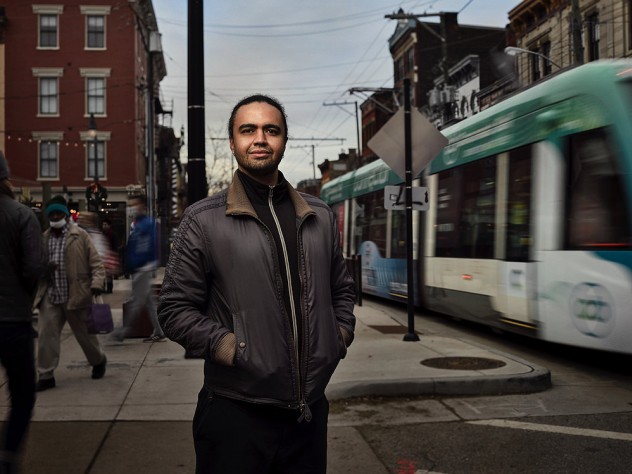
Associate Professor of Urban Design (and GSD alumnus) Stephen Gray defines his design philosophy in Harvard magazine’s March 2021 cover story, “Shaping Equitable Cities.” By revealing moments that stoked and influenced his approach to urban design—some while a GSD student, some as a GSD professor, and many in between—Gray illustrates his vision for integrating equity into core design decisions, especially those shaping the public realm. He also discusses ongoing work and dialogue underway at his Boston-based Grayscale Collaborative, including projects in Boston’s evolving Seaport District.
As writer Jacob Sweet observes, many design firms demonstrate—or aspire to demonstrate—a signature look or style, while Grayscale Collaborative aims instead toward “establishing a signature process.” As Gray explains, that process means incorporating everyday residents and community leaders into discussions of a project or a design from inception. More specifically, Gray discusses the need to consider questions of equity, racial justice, outcomes, and community when budgets and fundamental parameters of a project are still being decided. “That’s really where the center of power is,” he says. “Once a project is funded. . . you’ve already made it exclusive.” Gray amplifies that philosophy: “The pre-distribution of power means finding and identifying points of a process where power is exercised and decisions are made,” he says, “and making sure that people are involved centrally at that point.”
It’s a principle that lay at the heart of Gray’s GSD thesis: the study of a streetcar project in downtown Cincinnati—his hometown—that had been approved after multiple ballot efforts. Through his thesis study (advised by then-professors of urban planning Susan Fainstein and Richard Sommer), Gray realized the need for a so-called “urban growth regime.” He saw that public investment had to enrich the local community as much as it enriched businesses and developers.
Years later, Cincinnati was implementing its mixed-use downtown Innovation Corridor development, and Gray was among the Sasaki Associates urban designers working on the project. He got the chance to experience his design philosophy at work: after various economic analyses, presentations, listening sessions, and public conversations, Gray and his colleagues saw community organizations switch from opposing to supporting the project. The trust- and relationship-building mechanisms that Gray had centered in the design process would later help advance two other city initiatives, too.
“By the end of the project, not only did we have consensus,” Gray says, “but also all of the community-based organizations wrote letters of support to the Cincinnati Planning Commission.”
Read Harvard magazine’s March 2021 cover story, “Shaping Equitable Cities.”